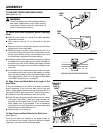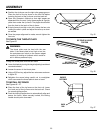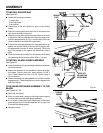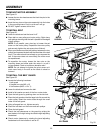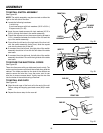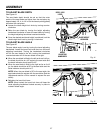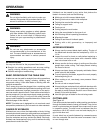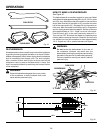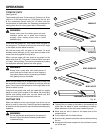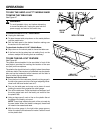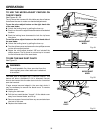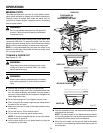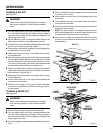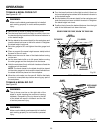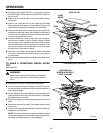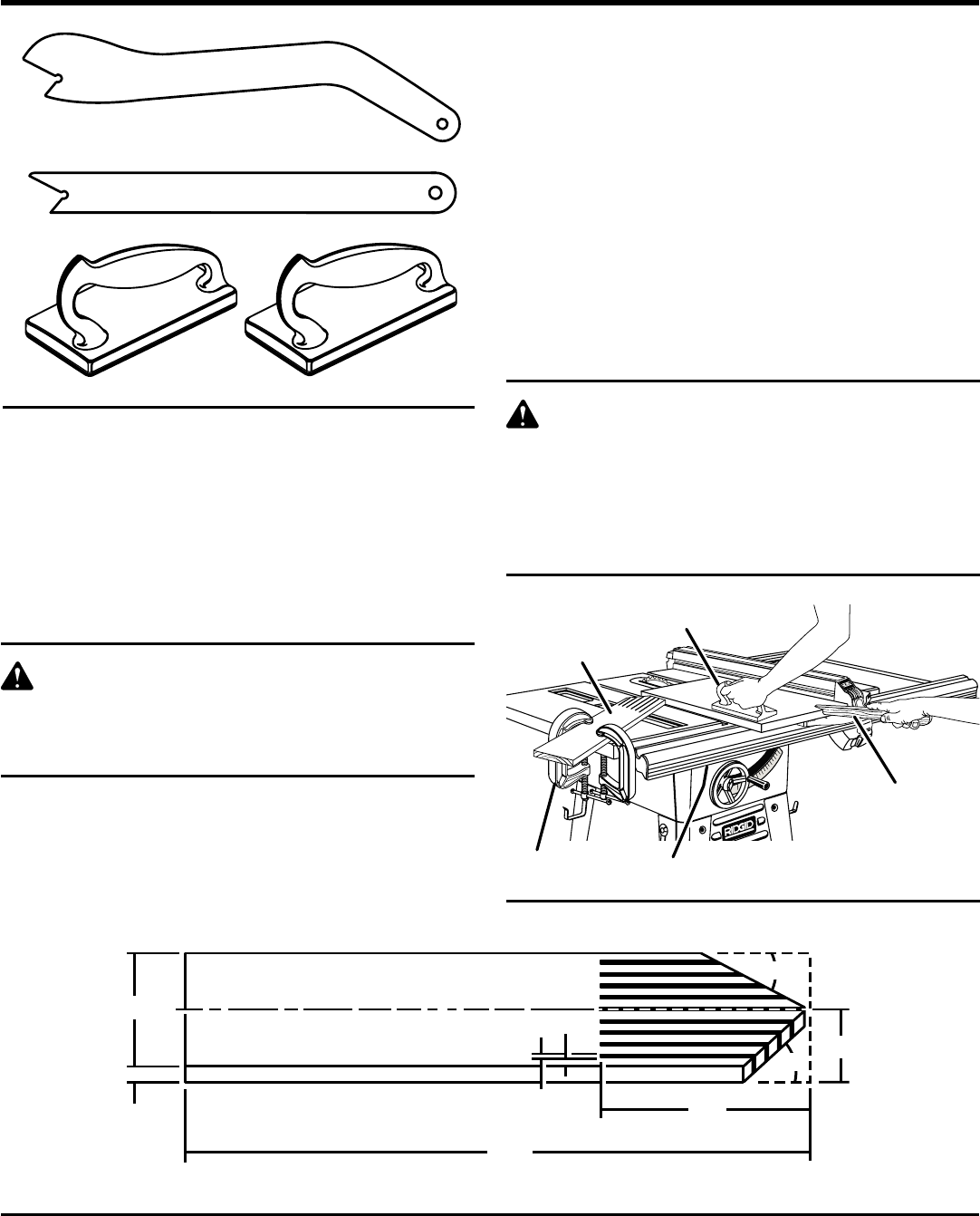
28
29
Fig. 43
PUSH BLOCKS
PUSH STICKS
OPERATION
FEATHERBOARD
A featherboard is a device used to help control the workpiece
by guiding it securely against the table or rip fence. Feather-
boards are especially useful when ripping small workpieces
and for completing non-through cuts. The end is angled,
with a number of short kerfs to give a friction hold on the
workpiece. Lock it in place on the table with a C-clamp. Test
that it can resist kickback by restricting the forward motion
of the workpiece.
WARNING:
Place the featherboard against the uncut portion
of the workpiece, to avoid kickback that could
cause serious personal injury.
HOW TO MAKE A FEATHERBOARD
See Figure 45.
The featherboard is an excellent project for your saw. Select
a solid piece of lumber approximately 3/4 in. thick, 3-5/8 in. wide
and 18 in. long. Mark the center of the width on one end of the
stock. Miter one-half of the width to 30° and miter the other
half of the same end to 45°. See page 34 for information on
miter cuts. Mark the board from the point at 6 in. Prepare the
saw for ripping as discussed on page 34. Set the rip fence to
allow approximately a 1/4 in. "finger" to be cut in the stock.
Feed the stock only to the mark previously made at 6 in.
Turn the saw OFF and allow the blade to completely stop
rotating before removing the stock. Reset the rip fence and
cut spaced rips into the workpiece to allow approximately
1/4 in. fingers and 1/8 in. spaces between the fingers.
WARNING:
Do not locate the featherboard to the rear of
the workpiece. Kickback can result from the
featherboard pinching the workpiece and binding
the blade in the saw kerf if positioned improperly.
Failure to heed this warning can result in serious
personal injury.
Fig. 44
Æ
Æ
PUSH BLOCK
“C” CLAMP
FEATHERBOARD
PUSH STICK
BEVEL LOCK LEVER
Fig. 45
1/8 in.
1/4 in.
3/4 in.
3-5/8 in.
1-13/16 in.
30°
45°
18 in.
6 in.




